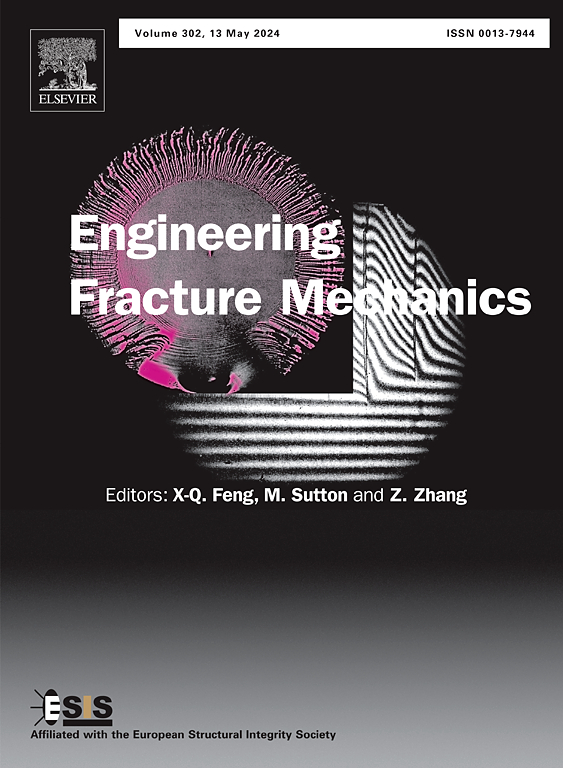Assessing the effects of loading rate on fracture toughness of AISI 1020 and API 5L X80 steels with hydrogen charging: experimental and numeric simulation study
IF 4.7
2区 工程技术
Q1 MECHANICS
引用次数: 0
Abstract
This study focuses on the effect of hydrogen on fracture toughness of AISI 1020 and API 5L X80 steels using experimental measurement technique and numeric simulation. Hydrogen was introduced into Single Edge Notch Bend (SENB) specimens through in-situ electrochemical charging techniques. The study varied the loading rates (K̇) and observed a significant reduction in the fracture toughness of both types of steels with hydrogen presence, worsening as loading rates decreased. The findings illustrated that the current standards of hydrogen compatibility test, which specifies a loading rate that ranges from to in toughness tests, may produce non-conservative results by not fully capturing the degradation at lower loading rates (K̇ <<). The low-strength steel (AISI 1020) showed a fracture mode transition from the Hydrogen-Enhanced Localized Plasticity (HELP) to the Hydrogen-Enhanced Decohesion (HEDE) as the K̇ decreases. Nevertheless, the crack re-initiation sites are always found at the tips of pre-cracks, which coincide with the areas of a high local hydrogen concentration and a high plastic strain. In contrast, the crack initiation sites in X80 steel tend to shift from the regions with high-strain (i.e. near the crack front) to areas with high hydrostatic stress (some distance away from the crack front) as the K̇ decreases, although it is still a predominantly quasi-cleavage (QC) fracture mode.
Finite element analysis further revealed that the diffusion and trapping of hydrogen atoms are significantly influenced by the gradient of hydrostatic stress and increment of plastic strain in the crack front region. In AISI 1020 steel, the concentration of trapped hydrogen significantly exceeds that of diffusible lattice interstitial hydrogen; In this case, the trapped hydrogen predominately dictates the distribution profile of total hydrogen at all K̇ conditions, whereas in X80 steel, the relative dominance of diffusible and trapped hydrogen depends on the loading rate: at lower K̇, diffusible hydrogen concentration at lattice sites exceeds that of the trapped hydrogen and there is a dynamic equilibrium relationship between the hydrogen induced by hydrostatic stress and the hydrogen trapped by plastic strain; at higher K̇, the hydrogen in trap sites dominate the hydrogen distribution. The differences in hydrogen concentration distribution are linked with different crack nucleation behaviours of the two steels under different loading rates, as well corroborated by fractographic observation of the actual fracture surface.
求助全文
约1分钟内获得全文
求助全文
来源期刊
CiteScore
8.70
自引率
13.00%
发文量
606
审稿时长
74 days
期刊介绍:
EFM covers a broad range of topics in fracture mechanics to be of interest and use to both researchers and practitioners. Contributions are welcome which address the fracture behavior of conventional engineering material systems as well as newly emerging material systems. Contributions on developments in the areas of mechanics and materials science strongly related to fracture mechanics are also welcome. Papers on fatigue are welcome if they treat the fatigue process using the methods of fracture mechanics.

 求助内容:
求助内容: 应助结果提醒方式:
应助结果提醒方式:


